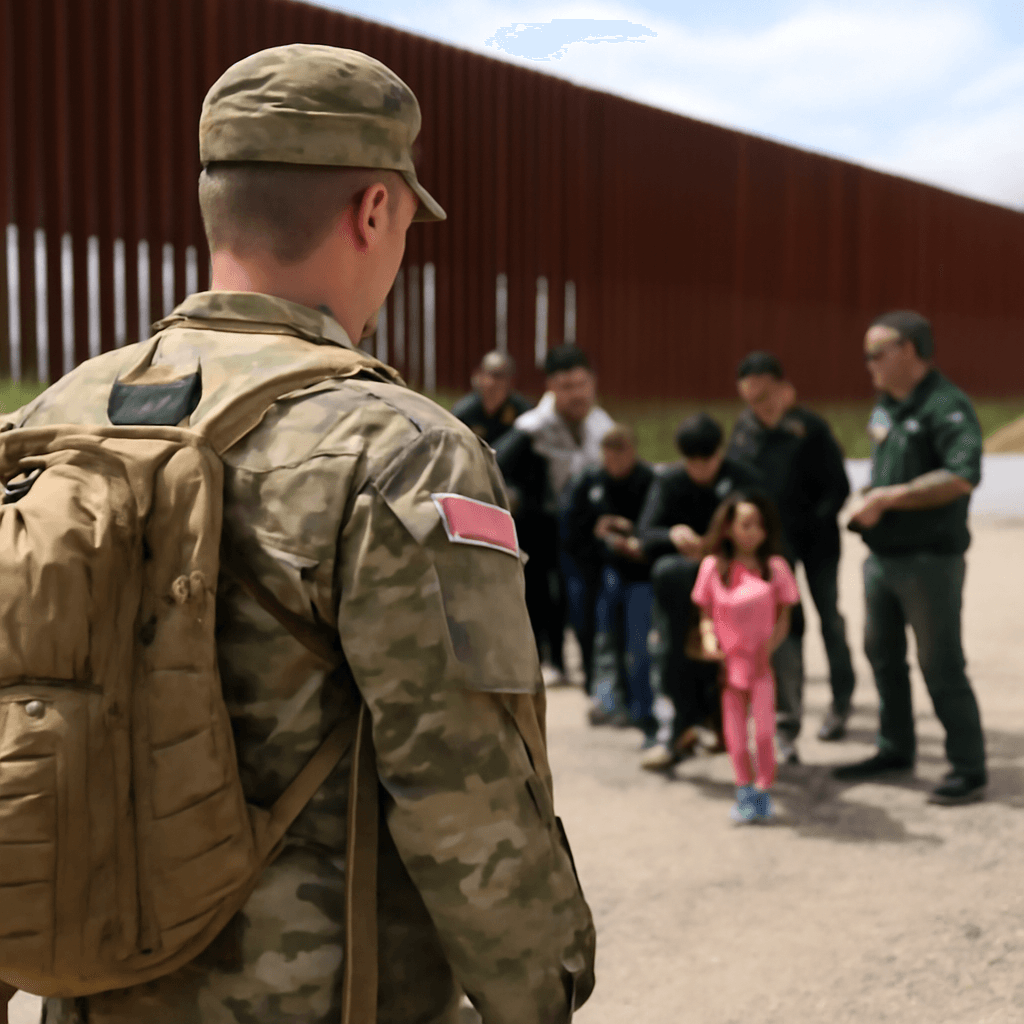Los Angeles County Declares State of Emergency Over Federal Immigration Raids
In an unprecedented move that highlights the growing tensions over immigration enforcement, Los Angeles County officially declared a state of emergency on Tuesday in response to recent Immigration and Customs Enforcement (ICE) raids. This declaration aims to unlock resources to assist individuals and families caught in the crosshairs of the federal government’s intensified immigration crackdown.
Emergency Declaration: A Response to Fear and Financial Hardship
Traditionally reserved for disasters such as wildfires and earthquakes, this emergency declaration marks a novel approach by local authorities to address what they describe as a humanitarian crisis stemming from immigration enforcement actions. The measure, approved by a 4-to-1 vote by the Los Angeles County Board of Supervisors, permits officials to allocate funds and aid to those affected by the raids — especially undocumented residents who are living in fear and suffering economic fallout.
Board member Janice Hahn, who supported the declaration, painted a vivid picture of the community’s distress: "We have residents afraid to leave their homes, entire families left destitute because their primary breadwinners have been torn away from workplaces without warning. This isn’t just about immigration enforcement; this is about human lives and families struggling to survive.”
Financial Relief Measures and Possible Protections for Tenants
One tangible outcome of the emergency declaration is the enabling of rental relief efforts and potential tenant protections. The county recently earmarked approximately $30 million to provide rental assistance to residents impacted by both recent wildfires and immigration detentions. This fund is expected to accept applications as early as December.
Importantly, the emergency status could pave the way for further local measures, such as implementing eviction moratoriums for tenants unable to meet rent obligations due to sudden income loss after family members are detained. Such protections are critical in a region where many immigrant workers rely on daily wages and where eviction can lead to heightened risks for vulnerable populations.
Legal Challenges and Divided Opinions Within the Board
Despite the urgency conveyed by supporters, the declaration has sparked controversy. County legal advisors have warned of potential unintended consequences, including landlord income loss and increased risk of legal disputes. They also highlighted privacy concerns, suggesting that tenants might be compelled to reveal their immigration status publicly — a dangerous prospect that could invite further federal enforcement actions.
Board Supervisor Kathryn Barger voiced strong opposition, emphasizing that an emergency declaration should be reserved for immediate, life-threatening crises rather than complex social issues like immigration enforcement. "Emergency powers exist for situations with clear and direct risks to life and safety, such as wildfires — not as convenient detours around established policy-making processes," she said. Barger cautioned that overextending emergency powers might trigger legal challenges and undermine the democratic system.
Federal Enforcement and Local Pushback: The Larger Context
Los Angeles County, home to over 10 million residents and the nation’s largest population of undocumented immigrants, has long been at the epicenter of the immigration debate. The Trump administration’s recent escalation of immigration raids has ignited widespread protests and heightened calls for federal intervention.
In a controversial response, the federal government deployed National Guard troops and Marines to the region to support ICE operations, intensifying community fears and sparking a fierce backlash from local and state leaders. These officials have sought to curb enforcement through bans on federal immigration actions, legal challenges against indiscriminate arrests, and protective policies for immigrant communities.
Judicial Battles Reflect Ongoing Uncertainty
Earlier this summer, a federal judge temporarily barred the Trump administration from conducting blanket immigration arrests in Los Angeles County, offering a semblance of relief to residents. However, this ruling was later overturned by the Supreme Court, eliminating that safeguard and reinstating the threat of widespread detentions.
Expert Insight: Balancing Enforcement and Community Stability
Experts in immigration policy suggest that Los Angeles County’s emergency declaration reflects a broader struggle to balance federal immigration enforcement with local community stability and human rights protections. Dr. Maria Lopez, an immigration policy analyst at UCLA, explains, "This declaration is more than a bureaucratic tool; it is a statement about the social and economic fabric of one of America’s most diverse counties. The fear spread by aggressive raids undermines not only immigrant communities but the larger economy that depends on their labor and contribution."
Legal scholars also note that such emergency measures may increasingly become a frontline response as federal policies conflict with local priorities, sparking debates about states’ and counties’ roles in immigration governance.
Looking Ahead: What This Means for Immigrant Communities
For thousands of undocumented residents and their families, the emergency declaration and accompanying relief measures offer a lifeline amidst uncertainty. Yet, critical questions remain:
- How will local governments sustain support amid ongoing federal enforcement?
- Could expanded tenant protections create new legal entanglements?
- What are the longer-term implications for public trust and community cohesion?
As immigration policy continues to evolve, Los Angeles County’s bold approach may serve as a model—or a cautionary tale—for other jurisdictions grappling with similar challenges.
Editor’s Note
Los Angeles County’s declaration of emergency over federal immigration raids spotlights a profound clash between local humanitarian concerns and federal immigration enforcement priorities. While the measure aims to protect vulnerable families from economic and emotional devastation, it opens complex legal and policy debates about the scope of emergency powers. This situation raises essential questions about how communities can uphold dignity and security amid a polarized national immigration landscape.
Readers are encouraged to reflect on the balance between rule of law and compassion, the role of local governments in federal policy realms, and the human stories behind immigration headlines.


















